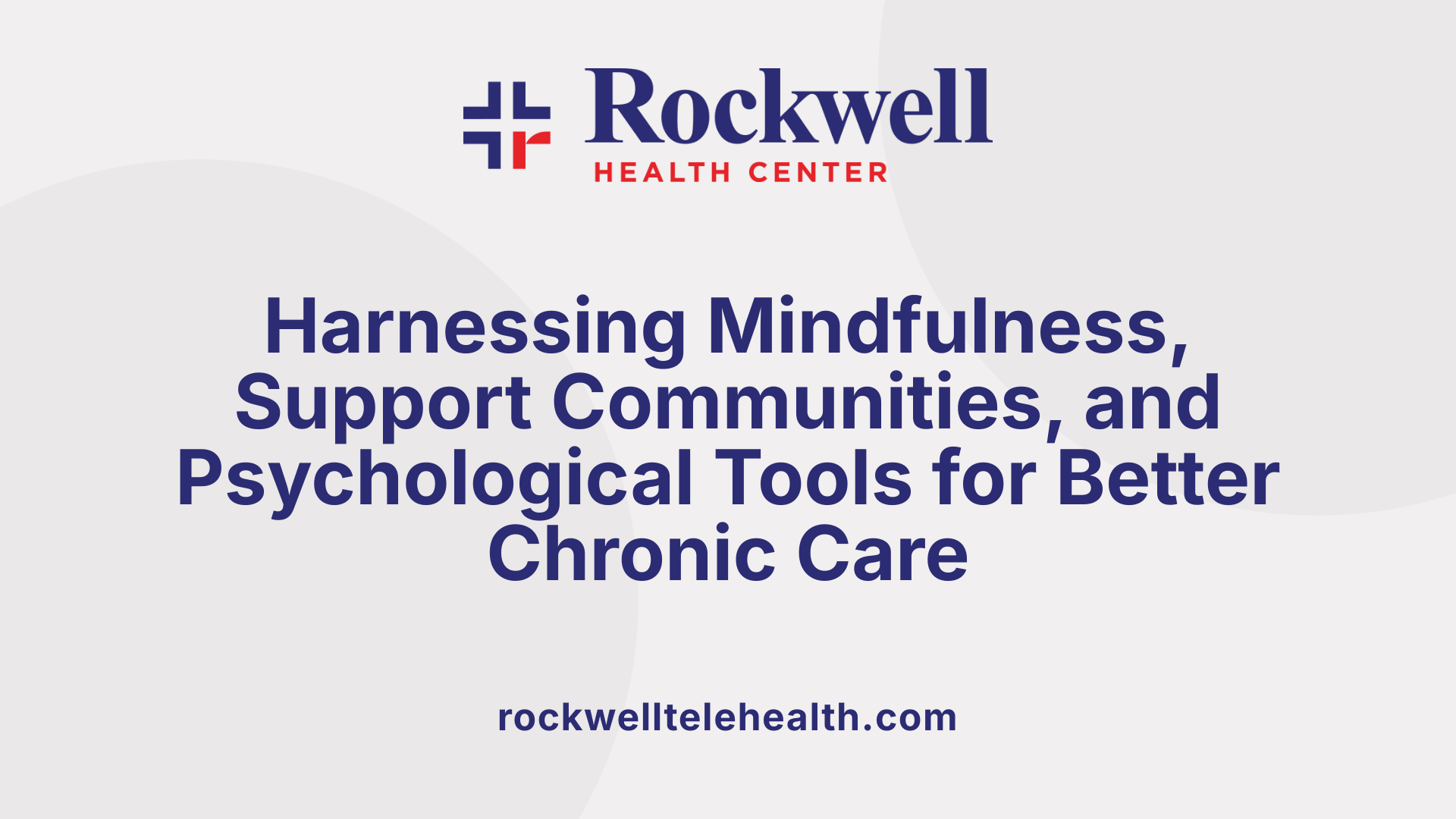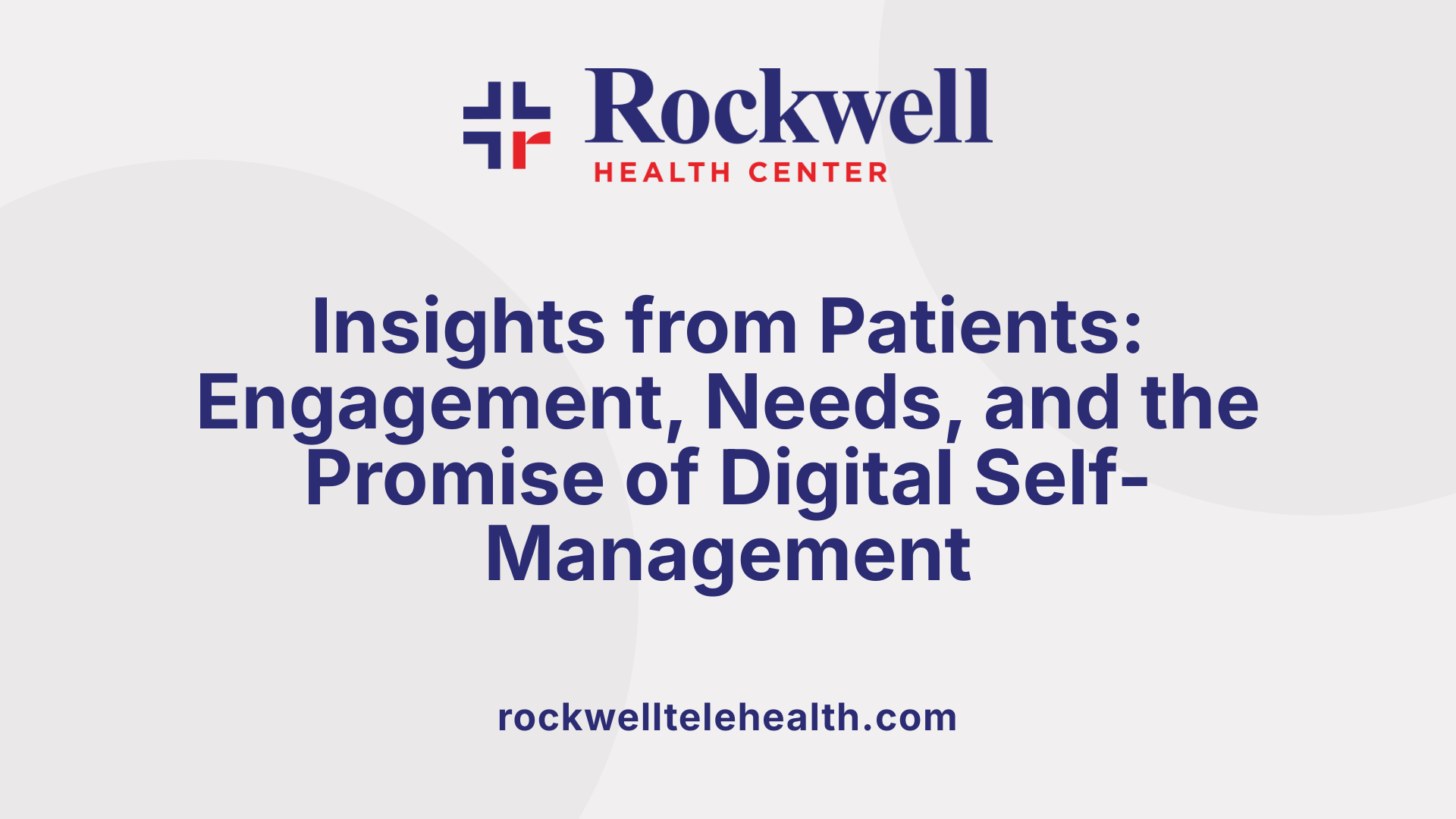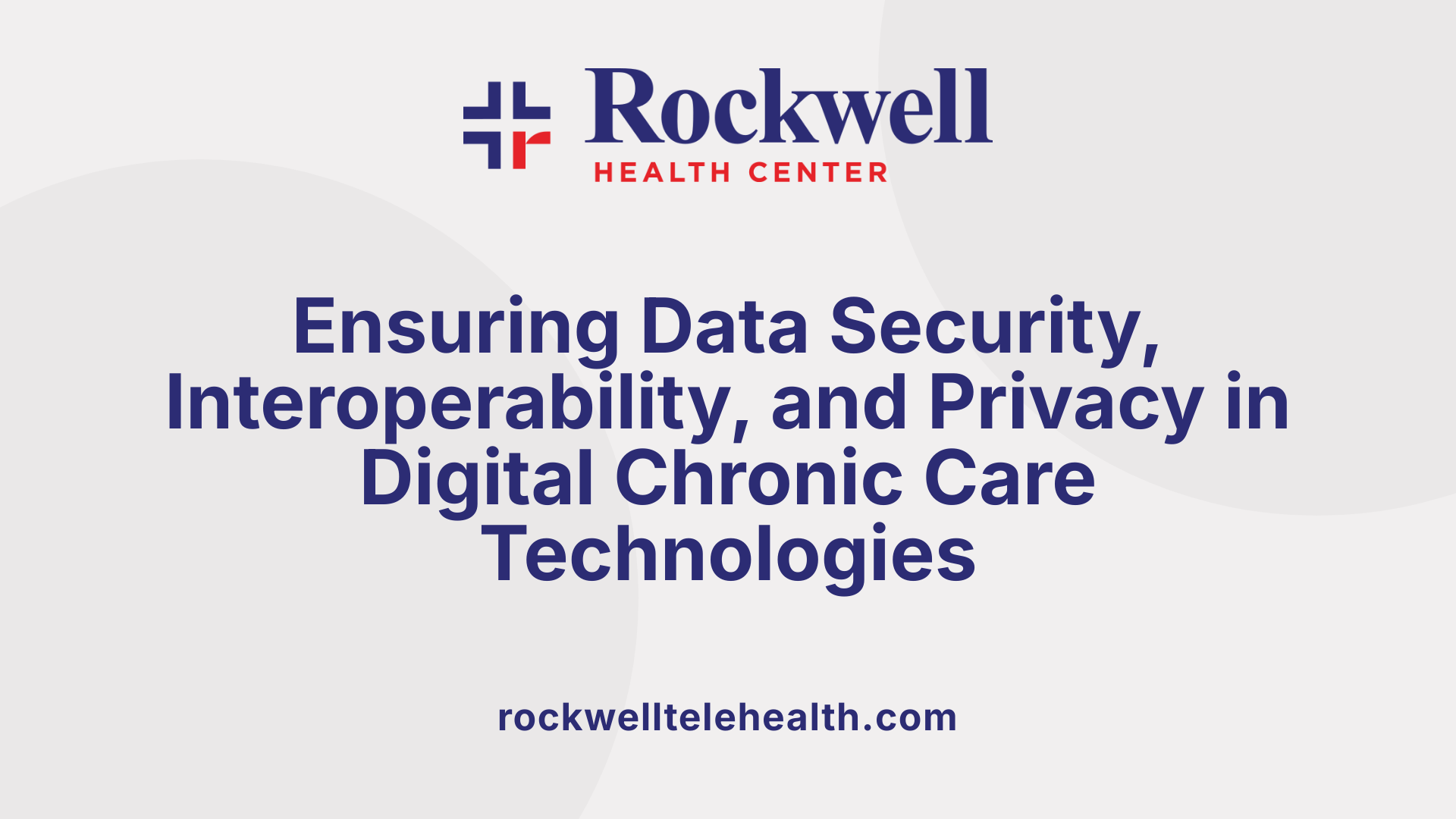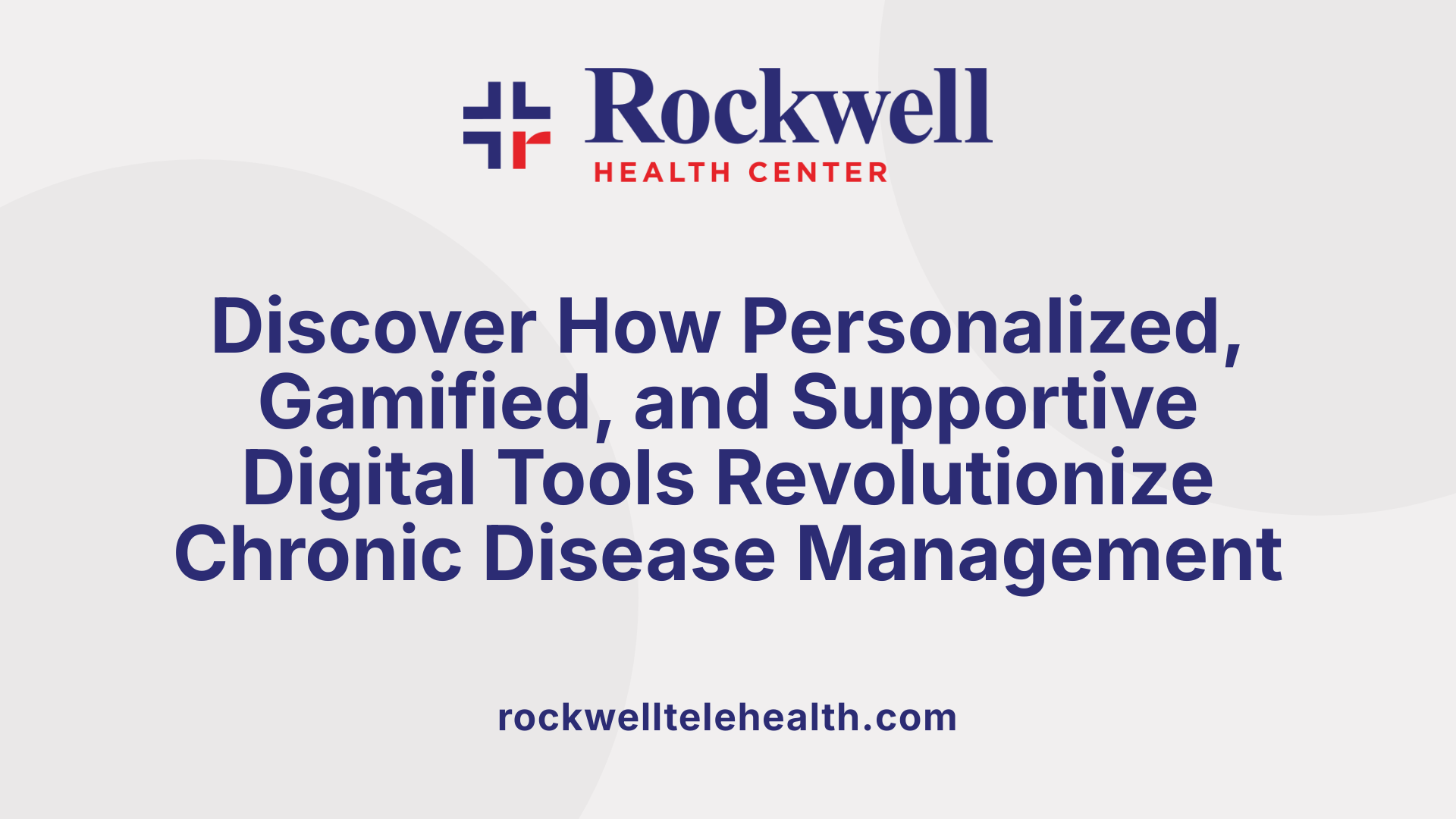Revolutionizing Healthcare Delivery Through Online Support
The landscape of managing chronic conditions is rapidly evolving with the advent of digital health solutions. Online personalized support systems leverage cutting-edge technology to enable patients to better understand, manage, and live with their conditions. This article explores the features, strategies, evidence, and roles of online health programs, revealing how they are reshaping patient outcomes and health system efficiency.
Comprehensive Architecture of Mobile Health Systems for Chronic Care
What features and benefits do online health programs offer for people with chronic illnesses?
Online health programs are transforming the way patients manage chronic conditions. They typically include features such as remote patient monitoring devices—like blood glucose meters, blood pressure monitors, and connected scales—that allow real-time data sharing with healthcare teams. These tools enable continuous oversight of health parameters, helping detect issues early and adjust treatments promptly.
Educational resources tailored to individual needs are central to many programs, empowering patients with knowledge about their conditions. For example, weekly lessons, personalized care plans, and goal-setting modules help maintain motivation and promote lifestyle improvements such as diet and exercise. Many platforms incorporate social support elements, including virtual communities where patients can share experiences and encouragement, fostering a sense of inclusion and commitment.
One of the most significant advantages is the integration of decision support systems that utilize validated predictive models and clinical guidelines. These systems assist both care teams and patients in making informed decisions, optimizing treatment adherence and health outcomes.
Furthermore, these programs often include gamification elements—such as rewards and progress tracking—that boost engagement and motivation. Such features help sustain long-term self-management efforts, contributing to improved physical and psychological well-being.
Overall, online health programs provide a comprehensive, accessible, and patient-centered approach to managing chronic diseases, reducing hospital visits, enhancing quality of life, and supporting a move towards more sustainable healthcare delivery.
| Feature | Description | Benefits |
|---|---|---|
| Remote Monitoring Devices | Connected sensors for vital signs and health markers | Continuous oversight, early detection |
| Educational Resources | Tailored lessons and health info | Increased self-awareness, informed decisions |
| Social Support | Virtual peer communities and secure messaging | Emotional support, motivation |
| Decision Support Systems | AI-driven analytics & clinical guidelines | Personalized care, better adherence |
| Gamification | Rewards, progress tracking | Higher engagement, sustained efforts |
By combining these components within a standardized, interoperable architecture—adhering to ISO/IEC 27001, HL7, ICD-10, and openEHR standards—these systems ensure data security, flexibility, and seamless communication across healthcare providers. This integrated approach is key to effective management of myriad chronic conditions and to improving overall patient health.
Utilizing Psychological and Social Components in Digital Interventions

What is the role of online personalized support in healthcare for chronic conditions?
Online personalized support is transforming the way patients manage chronic illnesses. It offers tailored advice and continuous health monitoring that boost patient engagement and self-management capabilities.
In addition to tracking health metrics, these systems integrate psychological approaches such as mindfulness practices, helping patients develop greater self-awareness and acceptance of their condition. This mental grounding is essential for coping with long-term health challenges.
Social inclusion features embedded within virtual platforms like Piazza Grande foster a sense of community among users. Connecting with peers provides emotional support, reduces feelings of isolation, and encourages shared learning. These social interactions are vital for motivation and sustained health behaviors.
Gamification elements serve to motivate users by making health routines more engaging. Educational content tailored to individual needs further empowers patients, making complex health information accessible and actionable.
Decision support systems harness validated predictive models and clinical guidelines to assist both patients and providers in making informed choices. This integration improves adherence, enables early intervention, and promotes proactive health management.
Telehealth technologies facilitate real-time communication and monitoring, especially beneficial for underserved populations or those with mobility restrictions. By bridging gaps in care, these digital tools enable timely support, enhance treatment outcomes, and reduce overall healthcare costs.
In summary, combining psychological tools with social platforms in digital health systems creates a holistic approach. It boosts self-efficacy, provides emotional resilience, and fosters a supportive environment that is crucial for effective chronic disease management.
Preliminary Findings and User Engagement in Digital Chronic Care

What are the patient needs assessment findings?
Preliminary assessments involving 22 patients reveal that individuals managing chronic conditions are experiencing evolving needs for greater self-awareness and empowerment. These patients show an increasing interest in using new communication technologies to enhance their self-management capabilities. Many participants expressed motivation to learn more about their health, indicating a desire for tools and resources that support education, monitoring, and social connection. Understanding these needs emphasizes the importance of designing digital health systems that are adaptable, user-friendly, and aligned with patient preferences.
Do patients show interest in communication technologies?
Yes, the initial feedback from patients clearly indicates interest in communication technologies used for health management. Patients are eager to engage with digital platforms that facilitate direct communication with healthcare providers, peer support groups, and personalized health coaching. This openness to technology suggests that digital health tools can significantly improve patient engagement, adherence to treatment plans, and overall management of chronic conditions.
Are there evidence-based online programs and resources that support chronic condition management?
Yes, there are numerous evidence-based online programs and resources designed to support chronic condition management. Programs such as Better Choices, Better Health, and BRI Care Consultation offer structured, remote workshops focused on skills like goal setting, decision making, problem-solving, and self-monitoring, all supported by credible research and funding from agencies like the CDC and the Administration on Aging. These programs include tailored content for conditions such as arthritis, diabetes, heart disease, and depression, and are accessible through online and telephone formats to reach diverse populations, including older adults and those with disabilities. The Chronic Disease Self-Management Education (CDSME) programs, developed by Stanford University, have engaged hundreds of thousands of participants, demonstrating their effectiveness in improving confidence and health outcomes. Overall, these resources provide evidence-based, scalable solutions to help individuals manage their chronic conditions more effectively from their homes.
By integrating these insights, digital health systems can better support patients’ needs, encouraging active participation and empowering individuals to engage in healthier lifestyles and effective disease management.
Technical Foundations and Security in Digital Health Platforms
 Managing chronic diseases efficiently with digital health solutions involves integrating various technological components to ensure safe, reliable, and personalized care.
Managing chronic diseases efficiently with digital health solutions involves integrating various technological components to ensure safe, reliable, and personalized care.
A crucial aspect is interoperability, which allows different health systems, devices, and applications to exchange data seamlessly. Standards such as HL7, openEHR, and ICD-10 are employed to facilitate a common language among systems, enabling comprehensive and accurate data sharing.
Data security is paramount in digital health to protect patient privacy and comply with regulations like ISO/IEC 27001. This involves encrypting data, secure authentication methods, and strict access controls to prevent unauthorized access and breaches.
Regarding standards, these play a vital role in defining how data is structured and transmitted. Protocols like HL7 support interoperability, while open standards ensure that technology integrations are scalable and sustainable.
Different components of a digital health platform work together to support patient self-management, remote monitoring, and clinical decision-making. For example, wearable devices collect real-time health data, which is securely transmitted to cloud platforms like KITE, utilizing standard formats for easy integration with electronic health records.
Additionally, decision support systems (DSS) leverage validated predictive models and clinical guidelines, embedded within the platform to guide healthcare providers and empower patients in making informed decisions.
Ensuring these technologies are secure and interoperable promotes continuous, personalized care, reduces errors, and safeguards sensitive health information. Platforms like ProACT, WellDoc, and Teladoc exemplify how standards and security measures underpin effective digital care for chronic conditions.
| Aspect | Standards and Technologies | Advantages and Applications |
|---|---|---|
| Interoperability | HL7, openEHR, ICD-10 | Seamless data exchange, comprehensive patient info, integration of devices |
| Data Security | ISO/IEC 27001, encryption, access controls | Protection of patient data, regulatory compliance |
| Customization | Modular architectures, adaptable APIs | Tailored patient support, flexible integration |
By aligning with these standards and security frameworks, digital health platforms can effectively support ongoing disease management, fostering improved health outcomes and patient safety.
Real-World Outcomes and Benefits of Digital Monitoring
The integration of digital health platforms into chronic disease management shows promising results in improving clinical outcomes, increasing patient engagement, and supporting treatment adherence. These tools, which include remote monitoring devices, personalized coaching apps, and data-sharing systems, have been proven to enhance patient awareness and active participation in managing their health.
Clinical outcomes such as blood pressure, blood glucose levels, and symptom control have improved through continuous monitoring and timely interventions. Studies demonstrate that digital platforms can contribute to reductions in systolic blood pressure, HbA1c levels in diabetics, and decreased hospital admissions for heart failure and other conditions.
Patient engagement significantly rises when individuals have access to easy-to-use technologies, tailored educational content, and social support networks. Features like gamification and virtual communities motivate users to stick with their self-management routines. For example, programs like Omada and WellDoc provide personalized support, real-time health data, and health coaching, leading to better treatment adherence and healthier lifestyles.
However, despite these benefits, evidence from systematic reviews in primary care settings indicates that digital health interventions often show limited or no significant improvements over traditional care regarding hospitalizations, quality of life, or mental health outcomes like depression and anxiety. Effectiveness varies based on intervention design, user motivation, and overcoming barriers like digital literacy and device usability.
In sum, while digital health tools have contributed to improved health outcomes and increased patient participation, their impact remains moderate. Continued research and further refinement are necessary to maximize their potential and ensure equitable access for all patients managing chronic conditions.
| Aspect | Outcomes | Details |
|---|---|---|
| Clinical improvement | Better control of disease indicators | Reduction in blood pressure, glucose levels, fewer hospital visits |
| Patient engagement | Increased participation in self-management | Use of gamification, social platforms, personalized feedback |
| Treatment adherence | Higher medication and lifestyle adherence | Reminders, coaching support, real-time monitoring |
| Barriers faced | Limited or no advantage over traditional care | Issues with digital literacy, device reliability |
| Future outlook | Need for optimized, tailored solutions | Ongoing research to enhance effectiveness and accessibility |
These advances highlight the evolving landscape of digital health in chronic care, emphasizing the importance of scalable, user-friendly solutions that address individual needs and barriers.
Innovative Features and Patient-Centered Approaches in Digital Support Programs

How do personalized pathways promote better management of chronic conditions?
Personalized pathways are at the core of many digital health programs. These tailored routes customize interventions based on individual health data, preferences, and needs. By integrating predictive analytics and clinical guidelines, these systems create specific care plans that adapt as a patient's condition evolves.
For example, programs like WellDoc utilize AI-driven insights to offer personalized coaching, supporting lifestyle modifications and medical decisions. The goal is to improve treatment adherence, reduce complications, and promote healthier behaviors by making interventions relevant and achievable for each user.
In what ways does mindfulness enhance patient well-being?
Mindfulness practices are incorporated into digital health platforms to foster psychological resilience and emotional well-being. These practices involve guided meditation, breathing exercises, and awareness techniques designed to reduce stress and improve mental health.
Integrating mindfulness helps patients manage the emotional challenges of living with chronic illnesses, such as anxiety and depression. Platforms like Omada and others develop personalized mindfulness pathways, which support positive psychological status and overall quality of life, complementing physical health management.
How gamification increases engagement and motivation?
Gamification introduces game-like elements—such as points, badges, challenges, and rewards—to motivate users. Its inclusion in health apps encourages ongoing participation and habit formation.
For example, programs that use gamification enable users to track their progress through virtual milestones, participate in friendly competitions, or earn recognition for health-related achievements. These features make self-management activities more engaging, boost motivation, and help sustain long-term health behaviors.
What features and benefits do online health programs offer for people with chronic illnesses?
Online health programs provide several advantages for managing chronic diseases. They feature real-time teleconsultations, remote patient monitoring, and personalized educational resources.
These tools improve medication adherence, blood pressure control, and dietary management by offering tailored feedback, reminders, and goal-setting support. Virtual communities foster peer support, while secure messaging enhances communication with healthcare providers.
Overall, such programs enable continuous, coordinated care that is accessible and responsive to individual needs, significantly enhancing health outcomes and quality of life.
| Feature | Description | Benefit |
|---|---|---|
| Personalized Pathways | Customized care plans based on patient data | Improved adherence and outcomes |
| Mindfulness Practices | Guided mental health exercises | Better emotional resilience |
| Gamification | Rewards and challenges | Increased engagement and motivation |
| Telehealth | Virtual consultations | Greater accessibility |
| Data Sharing | Continuous health info exchange | More complete and coordinated care |
Integration of AI and Predictive Analytics in Chronic Care Platforms
How effective are digital health platforms and tools in managing chronic diseases?
Digital health platforms and tools have shown promising potential in supporting individuals with chronic conditions. They enhance medication adherence, enable continuous symptom tracking, and foster greater patient engagement, all of which can lead to improved health outcomes.
Evidence from numerous studies indicates that technologies such as remote patient monitoring, teleconsultations, and tailored digital self-care programs can reduce critical health indicators, including systolic blood pressure in hypertension, HbA1c levels in diabetes, and hospitalization rates due to heart failure.
Despite these advances, systematic reviews focusing on primary care settings across Europe suggest that many digital interventions have limited or no significant advantage over traditional care regarding key outcomes like hospitalization, overall quality of life, depression, and anxiety. This indicates that while digital platforms can be beneficial, their impact alone may not be sufficient for substantial health improvements.
The success of these digital health solutions often hinges on their design and implementation. Features like personalized recommendations, motivational features such as gamification, and the integration of psychological and social support components increase their effectiveness. Moreover, addressing barriers such as digital literacy, user engagement, and data privacy is crucial.
Recent developments emphasize the importance of integrating artificial intelligence (AI) and predictive analytics into these platforms. These technologies enable decision support systems that analyze vast amounts of patient data to generate timely, personalized insights.
By using validated predictive models aligned with clinical guidelines, AI-driven tools can anticipate health deterioration, recommend bespoke interventions, and support clinicians in making informed decisions. For example, predictive analytics can forecast potential exacerbations in chronic respiratory or cardiac conditions, prompting early intervention.
The combined use of AI and predictive analytics thus enhances the capability of digital health platforms, making them more proactive rather than reactive. This integration facilitates a more personalized approach, encouraging patients to adopt healthier behaviors and adhere to treatment plans.
In summary, while digital health tools are increasingly incorporated into chronic disease management, their effectiveness depends on thoughtful design, user engagement, and technological sophistication. AI and predictive analytics represent promising advancements, offering the potential to not only monitor but also anticipate patient needs, ultimately aiming to improve health outcomes and reduce healthcare burdens.
Supporting Patients Through Data-Sharing and Continuous Engagement
What features and benefits do online health programs offer for people with chronic illnesses?
Online health programs are transforming how individuals manage chronic conditions by providing a suite of innovative features designed to promote self-management and ongoing care. These platforms often include real-time teleconsultations, enabling patients to connect with healthcare professionals remotely, which improves access and convenience.
Remote patient monitoring is another core feature. Patients can use connected devices like glucose monitors, blood pressure cuffs, or scales that automatically share data with healthcare providers. This continuous flow of information helps in tracking health metrics, detecting issues early, and adjusting treatments promptly.
Educational resources tailored to individual needs are integrated into most programs. They support patients in understanding their condition better, following prescribed routines, and making informed lifestyle choices. Personalized goal-setting and reminders further motivate consistent self-care.
Virtual communities and secure messaging functions foster peer support and improve communication with care teams. Patients feel less isolated and more empowered as they share experiences and receive timely guidance.
These features collectively lead to better medication adherence, improved blood pressure control, and overall enhanced health outcomes. They also reduce barriers such as travel difficulties, mobility issues, and time constraints, making continuous care more accessible.
Furthermore, the integration of these digital tools with primary care systems ensures seamless sharing of patient data. This coordination enables healthcare providers to have a comprehensive understanding of patient health, facilitating personalized treatment plans.
Ongoing engagement is maintained through regular updates, alerts, and feedback, which sustain motivation and promote lifestyle modifications. Engaged patients tend to experience higher satisfaction levels and improved quality of life.
In summary, online health programs are pivotal in delivering continuous, patient-centered management for chronic illnesses. By leveraging data sharing, remote monitoring, education, and communication tools, they support healthier, more empowered patients and more effective healthcare delivery.
Addressing Challenges, Barriers, and Future Directions

What are the features and benefits of online health programs for chronic illnesses?
Online health programs for managing chronic conditions offer a variety of tools and services designed to support patients remotely. These programs typically include real-time teleconsultations with healthcare professionals, remote patient monitoring devices, and personalized educational resources tailored to individual health needs.
One primary benefit is improved medication adherence and better control over health metrics such as blood pressure and blood glucose levels. These programs provide constant feedback, reminders, and goal-setting features that motivate patients to follow their care plans.
Furthermore, virtual health services minimize common barriers like transportation difficulties, geographic distance, and mobility challenges. This makes consistent healthcare access more feasible for patients, especially those with multiple or complex chronic illnesses.
Virtual communities integrated into these platforms foster peer support, reducing feelings of isolation and empowering individuals through shared experiences. Secure messaging functions enhance communication between patients and care teams, enabling quick queries, sharing progress, and receiving timely advice.
Overall, online health programs promote continuous, coordinated, and patient-centered management. They enhance self-management efforts, improve health outcomes, and elevate the quality of life for people living with chronic conditions.
How can digital literacy, device usability, accessibility, and reimbursement be improved?
For online health initiatives to reach their full potential, addressing barriers such as digital literacy, device usability, accessibility, and reimbursement policies is essential.
Improving digital literacy involves educating patients and caregivers on how to effectively use digital tools. This can be achieved through tutorials, user-friendly interfaces, and support services that guide less tech-savvy users.
Enhancing device usability requires designing intuitive, reliable, and easy-to-navigate interfaces. Reliable hardware, simplified setup processes, and comprehensive troubleshooting support can reduce frustration and improve user engagement.
Accessibility considerations must ensure that platforms are usable by individuals with disabilities, language barriers, or limited internet connectivity. Features such as screen readers, multilingual options, low-bandwidth modes, and adaptive interfaces can make digital health tools more inclusive.
Reimbursement policies need to evolve to support digital health services. Insurance coverage and billing codes for telehealth consultations, remote monitoring devices, and app use should be standardized and expanded. Clear reimbursement guidelines encourage healthcare providers to adopt and integrate these technologies into routine care.
Addressing these areas is crucial for broadening the reach and effectiveness of digital chronic disease management programs, fostering sustainable use, and ensuring equitable access for diverse patient populations.
What are the future prospects in online chronic disease management?
The future of online chronic disease management looks promising, with technological innovations continuing to evolve. Integration of artificial intelligence (AI) and machine learning will enable more personalized and predictive care strategies, anticipating health issues before they become severe.
Advances in wearable and implantable devices will provide more accurate, continuous health data, facilitating dynamic adjustments to treatment plans. Enhanced interoperability standards will allow seamless data sharing across different platforms and healthcare systems.
Virtual reality and augmented reality may offer new avenues for patient education and mental health support, making self-management more engaging and effective.
Furthermore, policymakers and healthcare organizations are increasingly recognizing the importance of reimbursement and regulation changes that support digital health expansion. Continued emphasis on data security, privacy, and ethical uses of AI will be pivotal.
Overall, these developments will promote more accessible, personalized, and efficient management of chronic illnesses, helping to reduce healthcare costs and improve quality of life.
A Holistic, Digital Approach to Chronic Disease Management
As digital health technologies advance, the potential to transform chronic disease management becomes increasingly apparent. Integrating personalized pathways, real-time monitoring, AI-driven insights, and supportive communities offers a comprehensive approach that can improve adherence, health outcomes, and patient satisfaction. The ongoing research and evolving implementation strategies will be crucial in overcoming existing barriers such as digital literacy, device usability, and equitable access. With continued innovation, online personalized support systems will play an essential role in making healthcare more proactive, accessible, and effective for people managing long-term health conditions.
References
- Personalized Support for Chronic Conditions: A Novel ...
- Omada Health: Manage Chronic Conditions & Embrace Your ...
- How Managing Chronic Conditions Is Streamlined with ...
- A Digital Platform to Support Self-management of Multiple ...
- Chronic Care Management Platform
- Online Chronic Care Management
- Chronic Disease Management at Home
- Mobile Apps for Chronic Diseases Management
























































































.png)